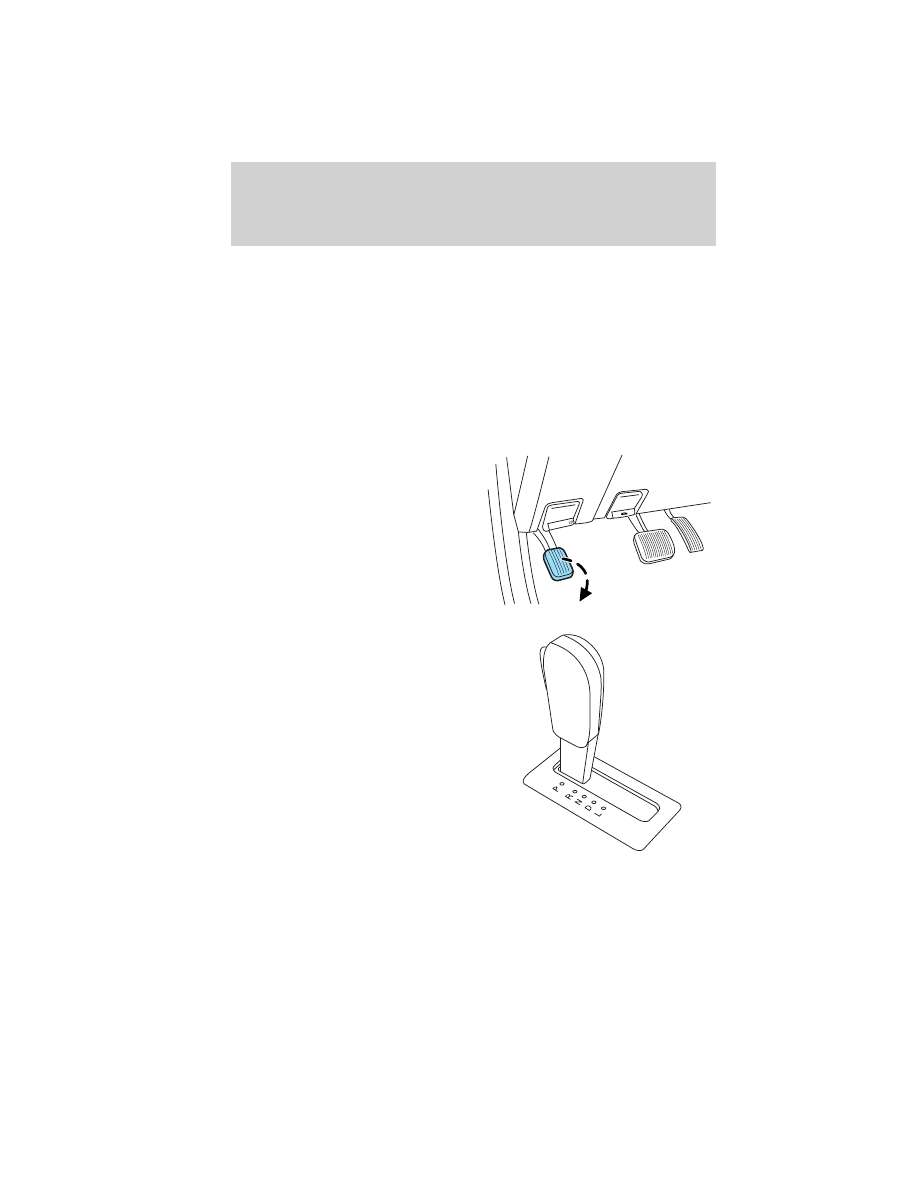Ford Escape Hybrid (2012 year). Manual — part 52
RECREATIONAL TOWING
Follow these guidelines if you have a need for recreational (RV) towing.
An example of recreational towing would be towing your vehicle behind
a motor home.
Note: Put your climate control system in recirculated air mode to
prevent exhaust fumes from entering the vehicle. Refer to the Climate
Controls chapter for more information.
Note: If you tow your vehicle with all four wheels on the ground, follow
these instructions after it is hooked-up to the RV or tow dolly:
• Tow only in the forward direction.
• Release the parking brake.
• Place the transmission shift lever in N (Neutral).
• Place the ignition to the accessory position (refer to Starting in the
Driving chapter).
• Your vehicle may be towed up to a speed of 75 mph (120 km/h), but
you should always obey local speed limits.
You also have the option of trailering the vehicle with its front wheels on
a dolly (FWD only), or trailering with all four wheels off the ground. Do
not tow your four–wheel drive (4WD) vehicle with the front
wheels off the ground and the rear wheels on the ground (such as
with the use of a tow dolly). This will cause damage to your 4WD
system.
For other towing requirements, refer to Wrecker towing in the Roadside
Emergencies chapter.
Tires, Wheels and Loading
210

STARTING
Positions of the ignition
1. Off— locks the gearshift lever
and allows key removal.
2. Accessory— allows the electrical
accessories such as the radio to
operate while the vehicle is not
running.
3. On— all electrical circuits
operational and warning lights will
illuminate. This is the position the
key is in when you’re driving.
4. Start— starts the vehicle and electrical power systems.
Note: Do not store the key in the ignition after the vehicle is turned off
and you have left the vehicle. This could cause a drain on the battery.
Preparing to start your vehicle
Engine starting is controlled by the electronically-controlled
Continuously Variable Transaxle (eCVT). For more information on
starting the vehicle, refer to Starting the vehicle in this chapter.
WARNING: Extended idling at high engine speeds can produce
very high temperatures in the engine and exhaust system,
creating the risk of fire or other damage.
WARNING: Do not park, idle, or drive your vehicle in dry grass
or other dry ground cover. The emission system heats up the
engine compartment and exhaust system, which can start a fire.
WARNING: Do not start your vehicle in a closed garage or in
other enclosed areas. Exhaust fumes can be toxic. Always open
the garage door before you start the engine. See Guarding against
exhaust fumes in this chapter for more instructions.
WARNING: If you smell exhaust fumes inside your vehicle, have
your dealer inspect your vehicle immediately. Do not drive if you
smell exhaust fumes.
Driving
211

Important safety precautions
A computer system controls the engine’s idle revolutions per minute
(RPM). When the engine starts, the idle RPM runs higher than normal in
order to warm the engine. If the engine idle speed does not slow down
automatically, have the vehicle checked.
Before starting the vehicle:
1. Make sure all vehicle occupants have buckled their safety belts. For
more information on safety belts and their proper usage, refer to the
Seating and Safety Restraints chapter.
2. Make sure vehicle accessories are off.
• Make sure the parking brake is
set.
• Make sure the gearshift lever is in
P (Park).
BRAKE
RELEA
SE P
Driving
212

3. Turn the key to 3 (on) without
turning the key to 4 (start).
Some warning lights will briefly illuminate. See Warning lights and
chimes in the Instrument Cluster chapter for more information
regarding the warning lights.
Starting the vehicle
1. Turn the key to 3 (on) without
turning the key to 4 (start). If there
is difficulty in turning the key,
rotate the steering wheel until the
key turns freely. This condition may
occur when:
• the front wheels are turned
• a front wheel is against the curb
2. Turn the key to 4 (start), then
release the key. After releasing the
key from the 4 (start) position, a
vehicle symbol (called the Ready
Indicator Light) will illuminate in
the instrument cluster to indicate the vehicle is ready to drive. This light
will remain on while the vehicle is on, whether the engine is running or
not, to indicate the vehicle is capable of movement (using its electric
motor, engine, or both). The vehicle’s computer will determine if an
engine start is required at key-on. The engine will start if it is necessary
for cabin heating or windshield defrost. The engine will also be started
when ambient temperatures are low. Note: The vehicle may be turned
off at any time by turning the key to the off position.
3. Once the “Ready Indicator Light” is on, apply the brake, release the
parking brake, shift into gear and drive.
Driving
213

Нет комментариевНе стесняйтесь поделиться с нами вашим ценным мнением.
Текст